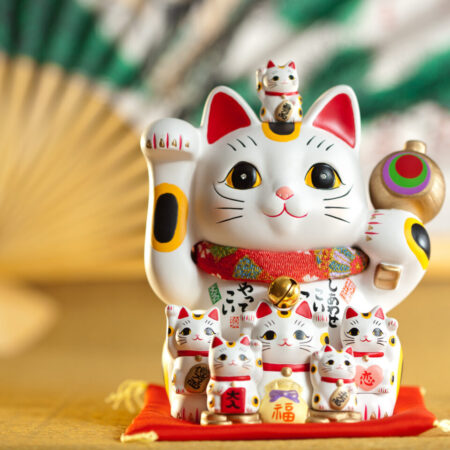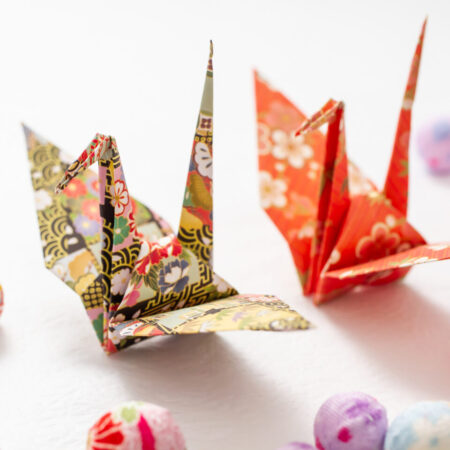History
Origami's History
Japan boasts numerous unique traditions and cultures, and among them, “origami” stands out as an especially unique and beautiful form of expression that has garnered attention worldwide. Origami showcases the infinite possibilities that can emerge from a single piece of paper, representing one of the proud traditional cultures of Japan. Its simplicity and depth continue to captivate people globally.
The Evolution of Washi Paper Paper-making techniques arrived in Japan during the Nara period. The unique sensibilities and skills of the Japanese people combined to produce “washi,” an astonishingly thin yet strong paper. Initially, washi was used for preserving important documents and records, but its pristine whiteness came to symbolize purity and was used as wrapping paper for offerings to the gods. During this packaging process, the delicate folding techniques that emerged were established as “ceremonial folding” during the Muromachi period.
Origin
What is "Ceremonial Folding?"
It’s a form of origami used for proper gift-giving, and can be considered the prototype of today’s “gift wrapping paper.” Various techniques evolved depending on specific schools or styles, with “Imagawa” and “Ise” being particularly renowned. During this era, “recreational origami,” meant for pleasure, also emerged. Representative examples include the “Yakkosan” and “crane,” but these were positioned as entertainment for the affluent. However, as the Edo period began, advancements in washi production made it affordable for the common folk, accelerating the spread of recreational origami. Moreover, by the 19th century, a tradition of origami also existed in Europe, and its unique culture fused with Japanese techniques. As a result, the diverse and delicate origami culture we know today blossomed.
Appeal
Origami's Global Charm and Educational Applications
“Origami USA” is an origami enthusiast group based in New York with over 1,600 members across 19 countries. Within the American Museum of Natural History, they conduct origami classes and set up origami tables to introduce visitors to the art year-round. Their mission includes promoting communication through origami and sharing its joys. Through workshops and annual conventions, they spread origami’s profound appeal worldwide. Similar organizations exist not just in the U.S., but also in countries like the UK, Spain, Italy, South Korea, China, Brazil, Germany, and Colombia.
In the U.S., there’s a growing focus on the numerous educational benefits of origami, and its use in educational settings is advancing. By learning complex folds and predicting the final form while working, children enhance their concentration and cognitive abilities. This further boosts spatial recognition and mathematical thinking. Moreover, origami doesn’t require a special location or expensive tools, making it easily accessible and promoting its proliferation in educational environments.
Potential
Infinite Possibilities from a Single Sheet: The Allure of Origami
▪️ A Simplicity Enjoyed Across Generations:
The beauty of origami lies in the ability to create diverse shapes and functions from merely folding a single sheet of paper. Be it a paper plane soaring in the sky, a paper balloon swaying in the wind, or the delicacy of the traditional origami crane, its accessibility allows people from toddlers to the elderly to immerse themselves in its joy.
▪️ Brain Training Stimulating Intellectual Curiosity:
Origami is not just a mere pastime. The act of folding, considering each step and shape, sharpens concentration, comprehension, and creativity. Especially, using fingertips stimulates the frontal lobe of the brain, and recognizing shapes and balance activates the temporal lobe. Such effects are said to enhance child education and also help in maintaining and revitalizing cognitive functions in the elderly.
▪️ A Creative Tool for Bridging Hearts:
Origami serves as a marvelous communication tool, strengthening bonds between people. Whether it’s parents and children enjoying together or sparking conversations with foreigners, origami offers a common point of interest. Through a single sheet of paper, people can foster deep bonds and empathy.





























